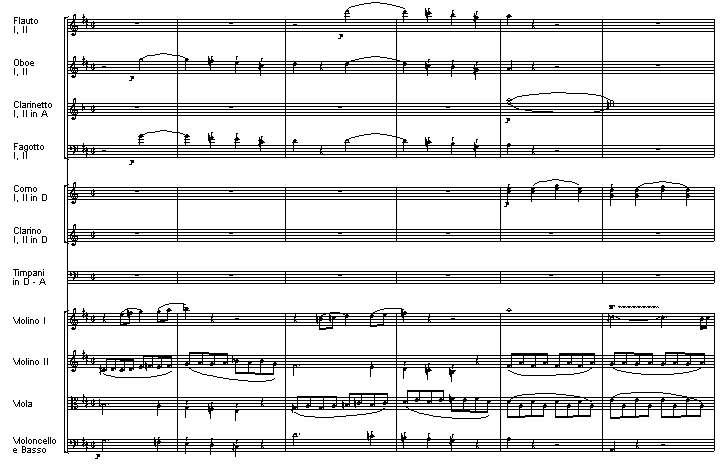
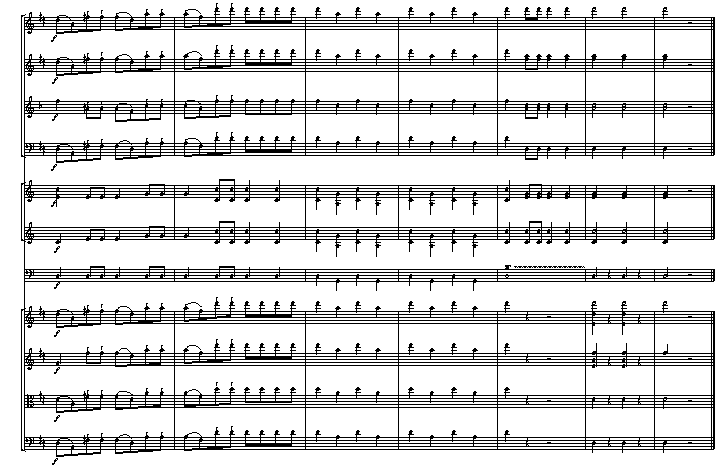
Fig. 1 Alternative conclusion by Mozart
This overture could be also performed in the concert as it is3. In fact it is not the first case that an overture terminates on fifth cord with piano dynamics being independently performed from opera which is, for example, the piano reduction of the overture of "The abduction from the seraglio" arranged by Mozart4.


Fig. 1 Alternative conclusion by Mozart
As Fig. 1 shows the two groups of descending pattern with staccato, one for bass strings and the other for wood winds keeping some time difference each other in piano, and leading the ending through the eighth note figures in D-major in forte.
However, during 18th and 19th centuries, sometimes it is said that this conclusion is inferior piece or other times it is unreasonably said that the handwriting is not authentic6. Since it is not published by AMA, this alternative conclusion appears with the printing finally in 20th century7.
In these publications editors called the version "concert ending" and it had interpreted that the alternative conclusion is applied from bar 282 (Fig.2). But there is no instruction in the autograph score where the alternative conclusion is applied because there are reference marks "#" at the top of the highest staff (namely the violin I) and at the front of the lowest staff (namely the cello/bass) respectively but the corresponding signs for them in the score (and in the well known copying score also) are not found.
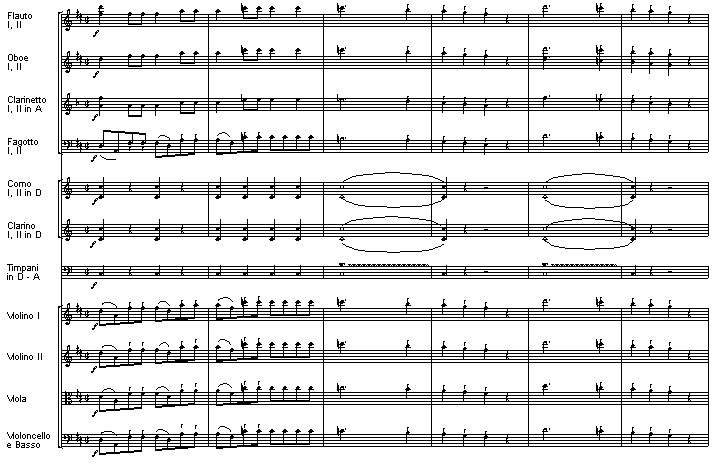
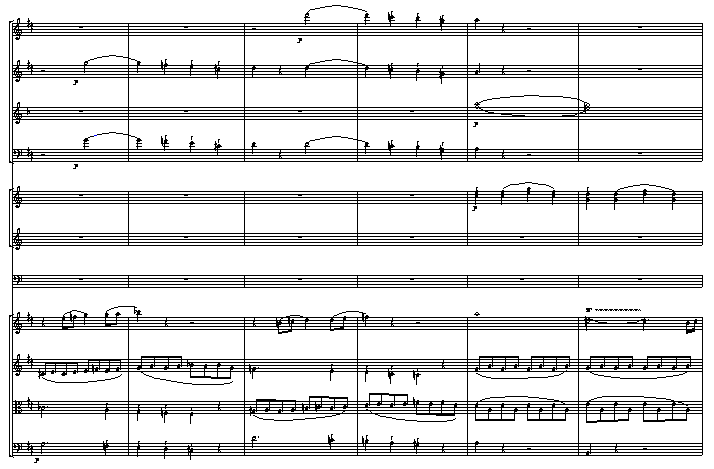

Fig. 2 Overture with the alternative conclusion by Mozart
(MIDI 2: Interpretation of the early 20th century)
Well, how do you think about? Even though I have no intention of relegation Mozart, after all something will be probably unpalatable?
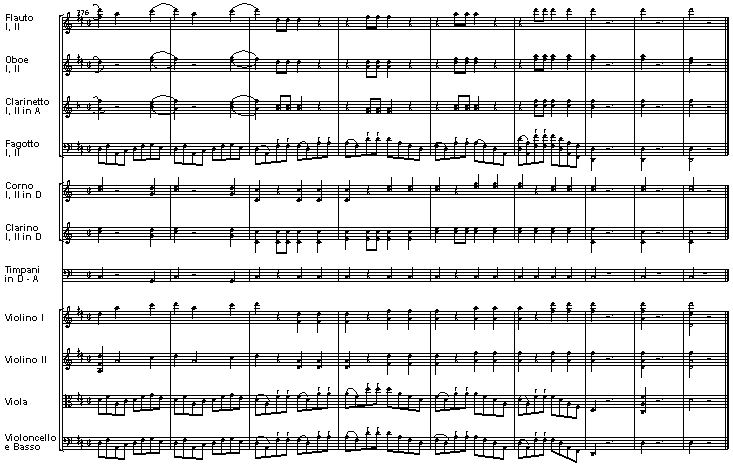
Fig. 3 Alternative conclusion by anonymous composer from J. André (=MIDI 3)
Fig. 3 shows that the music is connected from the bar 276 and is directly lead to the D-major-conclusion. Furthermore the following features may suggest performance practice and reception after Mozart time:
The latter is interesting for me. The orchestra of the day of the composer sometimes masked wind instruments by string instruments. Otherwise he did not make the method of writing where the 2nd beat is rest that Mozart did scarcely write down (Fig. 4). On the other hand Mozart being the opposite, we find rest on the 2nd beat applied on wind instruments (see Fig. 5 in bars 75 and 236).
When the above alternative version was published from J. André? If you assume it in 19th century far from Mozart era, you may be very surprized. The published date known from the plate number of the orchestra part is late 17959. Even though it is 8 years after the premiere of the opera and 4 years after Mozart's death, the performance style is much rapidly changed than expected.
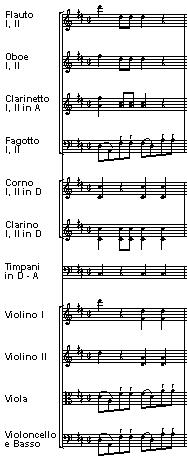
| 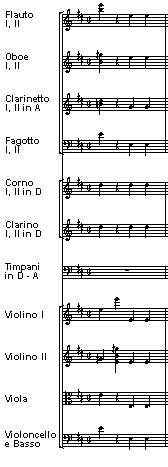 | |
| Fig. 4 Alternative conclusion by anonymous composer from J. André bar 278 | Fig. 5 Main portion of overture by Mozart bar 75 (similar for bar 238) |
The anonymous alternative conclusion from J. André which was performed time to time in LP10 era seems good construction, but the total feeling is something stiff.

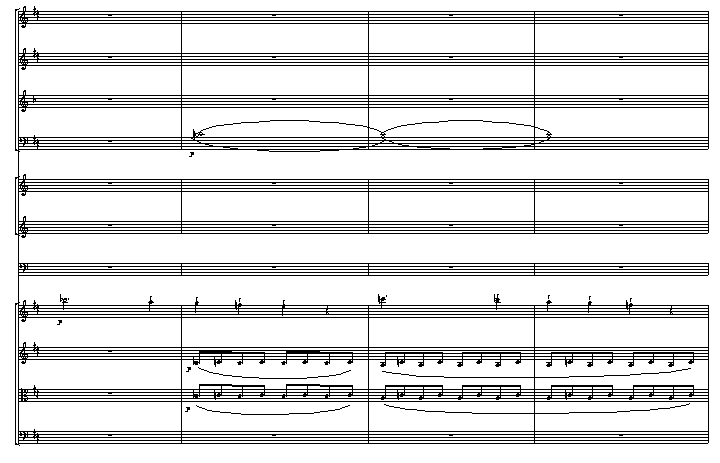


Fig. 6 Alternative conclusion by Mozart
(MIDI 4 : From bar 286 according to NMA)
If this view is correct the previous critics shall be blamed because the criticism of "Mozart's failure work" was wrong. Well, is the problem completely solved? I will check the points:
The detail of modulation will be discussed here (Fig. 7), in order to estimate a famous objection "of course the modulation to F-major (original bars 282-285) proceeds to the transition to the introduzione (No. 1), however it works by force and illogically before a D-major-conclusion of the overture.12"




Fig. 7 Modulation of alternative conclusion by Mozart (bars 226-298)
Fig. 7 shows Mozart's quick modulations through D - G (bars 277-281) - F (bars 282-285) - d (bars 286-287) - a (bars 288-289) - D (bars 290-298). As it is possible to consider C for bars 280-281 and B flar for bars 284-285 and G for bar 290 respectively, we obtain Table 1 below.
| bar | upto 276 | 277-279 | 280-281 | 282-283 | 284-285 | 286-287 | 288-289 | 290 | 291ff |
|---|---|---|---|---|---|---|---|---|---|
| # = 2 | D | D | |||||||
| # = 1 | G | (G) | |||||||
| # = 0 | (C) | a | |||||||
| # = -1 | F | d | |||||||
| # = -2 | (B flat) |
It is still possible to delete bars 282-285 but in that case modulation from major to minor through a quarter rest makes abrupt feeling as mentioned above. If bars 282-285 are played, modulation goes and back between maximum and minimum sharp marks thoroughly. This meets the description of NMA "F-major modulation before the D-major-conclusion is enough to be felt rather as brilliant trick."
Therefore Mozart's alternative conclusion is not substitution after bar 282 of the overture main section but it is to be substitution after bar 286.
However,
As the descending string figures with staccato is vivid even though they are in piano, the following descending oboe and flute figures with staccato shall be also vivid. Horn shall also insist the existence. MIDI 4 is unreliable on these points and MIDI 5 is better because the character is clearly indicated up to the conclusion. We can agree NMA says "the F-major modulation before the D-major conclusion to be felt rather as a brilliant trick." (I am interested in the fact that the intensity balance of instrument suggested by the anonymous composer shows similarity to the orchestra performance balance of the middle 20th century's conductor, e. g. Karl Böhm. etc. I think we must be free at least from the long lasted traditional orchestra balance.)
However, I think the above solution is too easy because violins have no melodies at all. I found similar measures where the identical rhythm pattern of the quarter notes appear in the main portion of the overture in bars 52-54 (213-215) and bars 73-74 (234-235). In bar 54 (215) no staccato is recommended because after the preceding eighth notes longer quarter notes are welcomed as a fresh rhythm. In the twin bars 52-53 (213-214) and also in another twin bars 73-74 (234-235) both violins are in eighth notes where other several parts are in quarter notes. From this analogy I dare to divide quarter notes of violin I and II into eighth notes in bars 294-295 (Fig. 8).
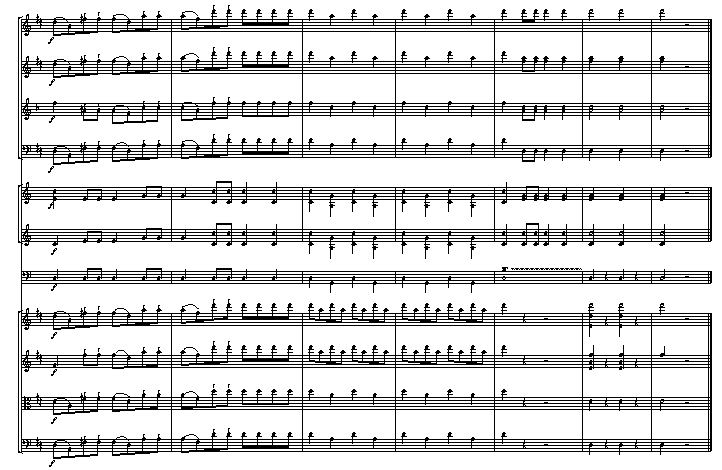
Is this interpretation of score going too far?
I think through the MIDI performance everyone agreed that the alternative conclusion of Don Giovanni overture is obviously Mozart's usual sort of work where slander and disregard was caused by misunderstanding. Lastly, the original overture for the opera will be tried to perform with the wind instrument dominant for better understanding.
When Mozart decided to cut the scena ultima at the certain performance in Vienna, he wrote into the autograph in bar 596 for Donna Anna, Donna Elvira, Zerlina and Don Ottavio (Masetto's voice part is not specially implied) a D-major accord "Ach" which is added to the yelp of Leporello14. It is very interesting to identify the ink used when adding the accord comparing the ink used when adding arias and composing the alternative conclusion of overture. And Mozart crossed out the "Ach" yelp again by (another?) ink. The ink contents analysis is therefore very effective tool and still under study. There are many problems accumulated for the Viennese performances of Don Giovanni.
Notes:
| 1 | Hardware sound generator is strongly recommended because the difference of performance is the main theme of the issue. Tempo is as follows. In accordance with Jean-Pierre Marty, The Tempo Indications of Mozart, Yale University Press 1988, andante is MM quarter note = 88. But since this tempo is too fast for triplet 32nd note with slur, I applied andante MM quarter note = 72. On the other hand molto allegro is followed to Marty's MM quarter note = 240. In bar 52ff eighth notes for bassoons are admitted to be changed to quarter notes in NMA for the breathing difficulty but the original eighth notes are applied for MIDI. | ||||||
| 2 | The composers other than Mozart are listed below. I thank Mr. Dennis Pajot for (1), (2) and (4). (1) Christian Cannabich (1731-1798): in Munich (Biography by Nissen) (2) A.E. Marschner: Piano arrangement, year unknown (3) J.P. Schmidt: in a full score, Schlesinger in Berlin (about 1839) (Köchel 6th edition) (4) Anonymous arrangements: The piano editions of Cranz, Bosworth, Litolff and Breitkopf & Härtel (5) Ferruccio Busoni (1866-1924): in a full score, Shirmer in New York (composed in 1908 and published in 1911) (108 bars from bar 277 as Mozartean paraphrase) (6) Leopold Stokowski (1882-1977): in LP (with National Philhaemonic in 1767) (26(?) bars from bar 276 as huge orchestration) (7) Otto Klemperer (1885-1973): in LP (with New Philharmonia Orchestra in 1964) (30 bars from bar 282 like Beethovenian style) | ||||||
| 3 | Example of LP and CD: Otmar Suitner conducting Staatskapelle Berlin. | ||||||
| 4 | Refer to the piano reduction of the overture of "The abduction from the seraglio" arranged by Mozart. (Sorry in Japanese) | ||||||
| 5 | NMA II:5/17 is published in 1968 edited by Wolfgang Plath and Wolfang Rehm. The preface is very informative and interesting. In the preface the alternative conclusion is explained "Different (concert) ending: Of course this end could be played also in the opera; the designation "concert ending" is insofar too narrow." In this context the parenthesis means suspension of decision. But in NMA IV:11/10 (Symphony volume) published in 1978 the same alternative overture is printed and Wolfgang Plath calls the piece "Don Giovanni Overture (Concert version)". In this context the parenthesis means rather restrictive. Moreover the date of composition is introduced in September 28, 1787 that is before Prague's premiere. The careless descriptions may cause misunderstanding of readers. But the music pieces with alternative conclusions by many composers other than Mozart described in note 2 could be assumed for purpose of sole performance instead of opera performance. | ||||||
| 6 | See NMA II:5/17 preface. | ||||||
| 7 | For example, Kalmus A6417 Conductor's Score, Edition Eulenburg No. 608, Dover Orchestral and Vocal Score in 1974 (unabridged republication of C. F. Peters c.1941) retain traces of the early 20th century printing. Example of LP: Sir Neville Marriner conducting Academy of St. Martin in the Fields. | ||||||
| 8 | We can refer to the following sources: (1) In "Mozart: Overture Don Giovanni (OGT 42)," Ongaku-no-Tomo Sha Corp., Tokyo, Japan 1954, the alternative conclusion is introduced mistakenly composed by Mozart. (2) Breitkopf & Härtels Partitur-Bibliothek Nr. 212, Mozart. Don Juan Ouvertüre gives footnote "Der Schluss der Ouvertüre vom Zeichen [coda mark] an, ist von Joh. André zum Zwecke von Aufführung derselben in Konzerten u. s. w. komponiert, in welchen sich nicht die Introduction der Oper an die Ouvertüre anschliesst." (Thanks to Mr. Yasuhiko Mori.) (3) Dover Publishing "Seven Great Opera Overtures by Mozart" (1998) gives footnote "The endings of the overtures to Die Entfuhrung aus dem Serail and Don Giovanni were composed by the legendary music publisher Johann Andre for concert performances; the original endings lead directly into the opera." (Thanks to Mr. Dennis Pajot.) (4) According to "Ouverture à grand orchestre de l'opéra: Don Juan, composeé par Mr Mozart, Oeuvre 52, -Offenbach, J, André, No.881. - St." in British Library, etc., we can say Johann André published the overture with alternative ending but we cannot say he composed the ending. The composer is still anonymous. | ||||||
| 9 | Refer to Wolfgang Matthäus & Hans Schneider: Musikverlag Johann André, Tutzing, 1973. Plate number 881(=2266) is published on 24th November 1795 and 3rd December 1795 (Second edition). | ||||||
| 10 | Example of LP: Sir Colin Davis conducting the Royal Philharmonic Orchestra and Bernhard Paumgartner conducting Mozarteum Orchestra. | ||||||
| 11 | In NMA II:5/17 preface "We can take attention on two four-bar-cycle groups in piano and better eighth-movement of string instruments."
| 12 | See NMA II:5/17 preface. | 13 | Example of CD: Bruno Weil conducting Tafelmusik and Emmanuel Krivine conducting Sinfonia Varsovia are also with staccato. | 14 | See NMA II:5/17 preface. | |
It will be beneficial to compare the difference of the proposed tones and chords in MIDI. Here again the intensity balance of instrument may be a key factor to feel the notes just normal or slightly foreign. The bars 32 - 35 are performed. The bars 42/43 are coming at the timing of 12 - 13 seconds from the beginning.
b'-b" (String dominant): b'-b" (Wind dominant)
h'-h" (String dominant): h'-h" (Wind dominant)

